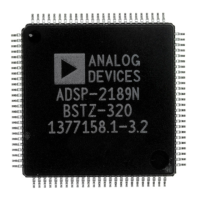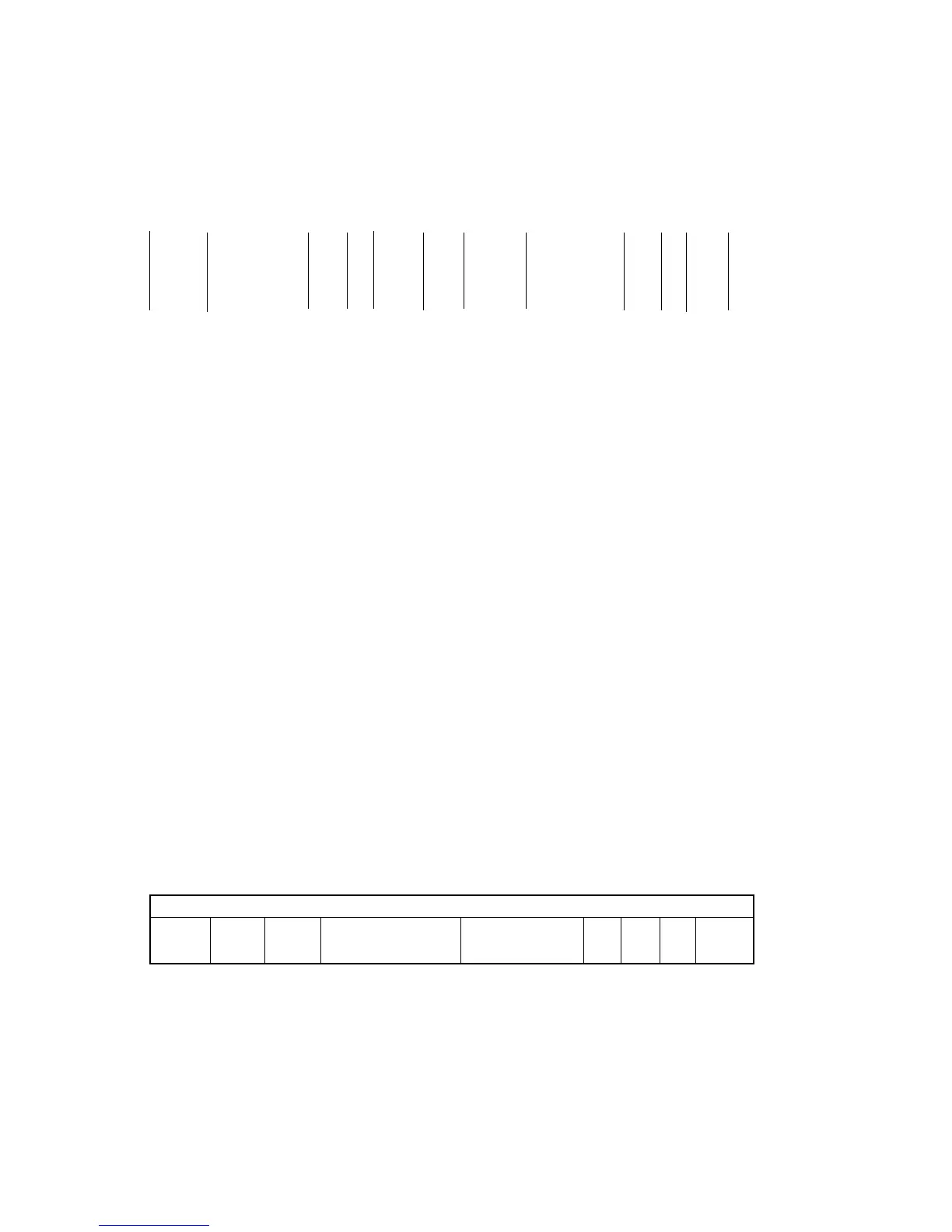15
15 – 103
Syntax:
AX0 = DM ( I0 , M0 ) , AY0 = PM ( I4 , M4 ) ;
AX1 I1 M1 AY1 I5 M5
MX0 I2 M2 MY0 I6 M6
MX1 I3 M3 MY1 I7 M7
Description: Perform the designated memory reads, one from data
memory and one from program memory. Each read operation moves the
contents of the memory location to the destination register. For this double
data fetch, the destinations for data memory reads are the X registers in
the ALU and the MAC, and the destinations for program memory reads
are the Y registers. The addressing mode for this memory read is register
indirect with post-modify. For linear (i.e. non-circular) indirect
addressing, the L register corresponding to the I register used must be
set to zero. The contents of the source are always right-justified in the
destination register.
A multifunction instruction requires three items to be fetched from
memory: the instruction itself and two data words. No extra cycle is
needed to execute the instruction as long as only one of the fetches is from
external memory.
If two off-chip accesses are required, however—the instruction fetch and
one data fetch, for example, or data fetches from both program and data
memory—then one overhead cycle occurs. In this case the program
memory access occurs first, then the data memory access. If three off-chip
accesses are required—the instruction fetch as well as data fetches from
both program and data memory—then two overhead cycles occur.
Status Generated: No status bits are affected.
Instruction Format:
ALU/MAC with Data & Program Memory Read, Instruction Type 1:
23 22 21 20 19 18 17 16 15 14 13 12 11 10 9 8 7 6 5 4 3 2 1 0
1 1 PD DD AMF 0 0 0 0 0 PM PM DM DM
I M I M
AMF specifies the ALU or MAC function. In this case, AMF = 00000,
designating a no-operation for the ALU or MAC function.
PD: Program Destination register DD: Data Destination register
AMF: ALU/MAC operation I: Indirect address register
M: Modify register
MULTIFUNCTION
DATA & PROGRAM MEMORY READ

